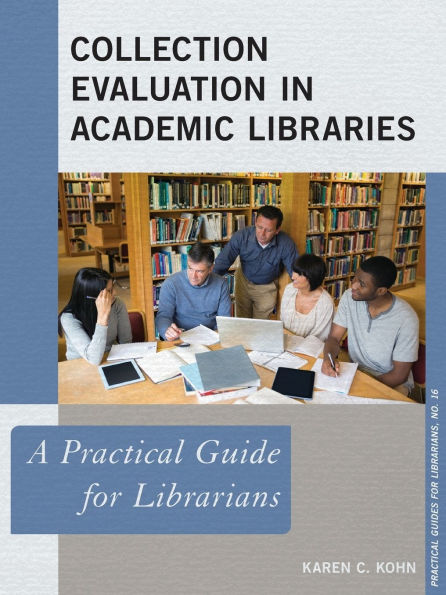Collection Evaluation in Academic Libraries: A Practical Guide for Librarians
Librarians have long used data to describe their collections. Traditional measures have simply been inputs and outputs: volumes acquired, processed, owned, or circulated. With the growth since the 1990s of cultures of assessment, librarians have sought statistics that are evaluative rather than simply descriptive. More recently, exponentially increasing journal prices and an economic recession have intensified the need to make careful purchasing decisions and to justify these to administrators. A methodical evaluation of a library collection can help librarians understand and meet user needs and can help communicate to administrators that the library is a good use of the institution's money. Collection Evaluation in Academic Libraries: A Practical Guide for Librarians equips collections managers to select and implement a method or several methods of evaluating their library collections. It includes sections on four tools for evaluation: • Comparison to peer institutions • Core lists • Usage statistics from circulation and ILL • Citation analysis Chapters on each of these approaches present the advantages and disadvantages of each method, instructions on data collection and analysis-with screenshots-and suggested action steps after completing the analysis. With a unique combination of step-by-step instructions and discussions of the purpose and role of data, this book provides an unusually thorough guide to collection evaluation. It will be indispensable for collection development librarians and anyone looking to strengthen the culture of assessment within the library.
1121263015
Collection Evaluation in Academic Libraries: A Practical Guide for Librarians
Librarians have long used data to describe their collections. Traditional measures have simply been inputs and outputs: volumes acquired, processed, owned, or circulated. With the growth since the 1990s of cultures of assessment, librarians have sought statistics that are evaluative rather than simply descriptive. More recently, exponentially increasing journal prices and an economic recession have intensified the need to make careful purchasing decisions and to justify these to administrators. A methodical evaluation of a library collection can help librarians understand and meet user needs and can help communicate to administrators that the library is a good use of the institution's money. Collection Evaluation in Academic Libraries: A Practical Guide for Librarians equips collections managers to select and implement a method or several methods of evaluating their library collections. It includes sections on four tools for evaluation: • Comparison to peer institutions • Core lists • Usage statistics from circulation and ILL • Citation analysis Chapters on each of these approaches present the advantages and disadvantages of each method, instructions on data collection and analysis-with screenshots-and suggested action steps after completing the analysis. With a unique combination of step-by-step instructions and discussions of the purpose and role of data, this book provides an unusually thorough guide to collection evaluation. It will be indispensable for collection development librarians and anyone looking to strengthen the culture of assessment within the library.
89.0
Out Of Stock
5
1

Collection Evaluation in Academic Libraries: A Practical Guide for Librarians
204
Collection Evaluation in Academic Libraries: A Practical Guide for Librarians
204Related collections and offers
89.0
Out Of Stock

Product Details
| ISBN-13: | 9781442238602 |
|---|---|
| Publisher: | Bloomsbury Academic |
| Publication date: | 06/24/2015 |
| Series: | Practical Guides for Librarians , #16 |
| Pages: | 204 |
| Product dimensions: | 8.50(w) x 11.00(h) x 0.60(d) |
About the Author
From the B&N Reads Blog
